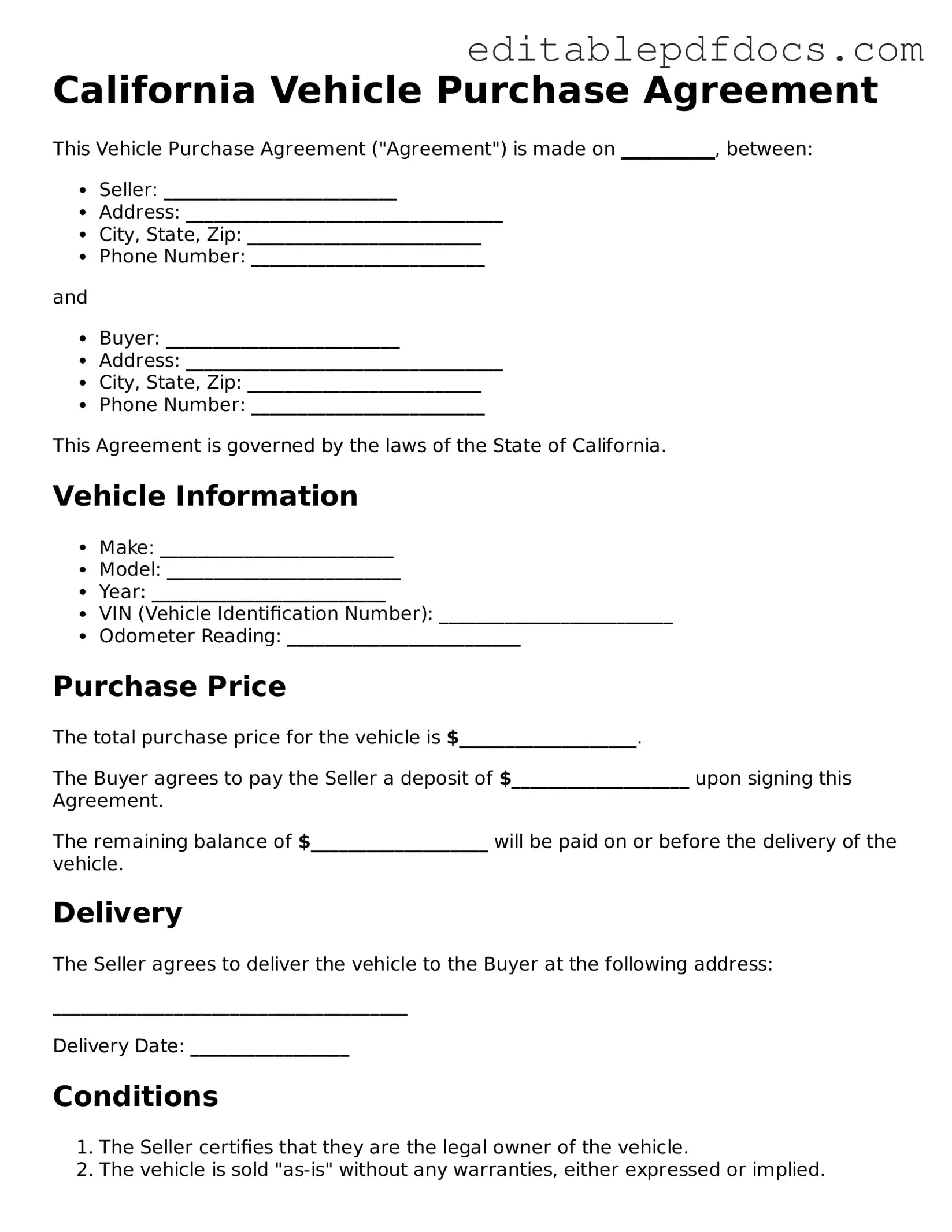Vehicle Purchase Agreement Document for California
The California Vehicle Purchase Agreement is a legal document that outlines the terms and conditions of a vehicle sale between a buyer and a seller. This form provides essential details such as the vehicle's description, purchase price, and payment terms, ensuring both parties are clear on the transaction. Understanding this agreement is crucial for a smooth vehicle purchase process.
To proceed with your vehicle purchase, fill out the form by clicking the button below.
Open Editor Now
